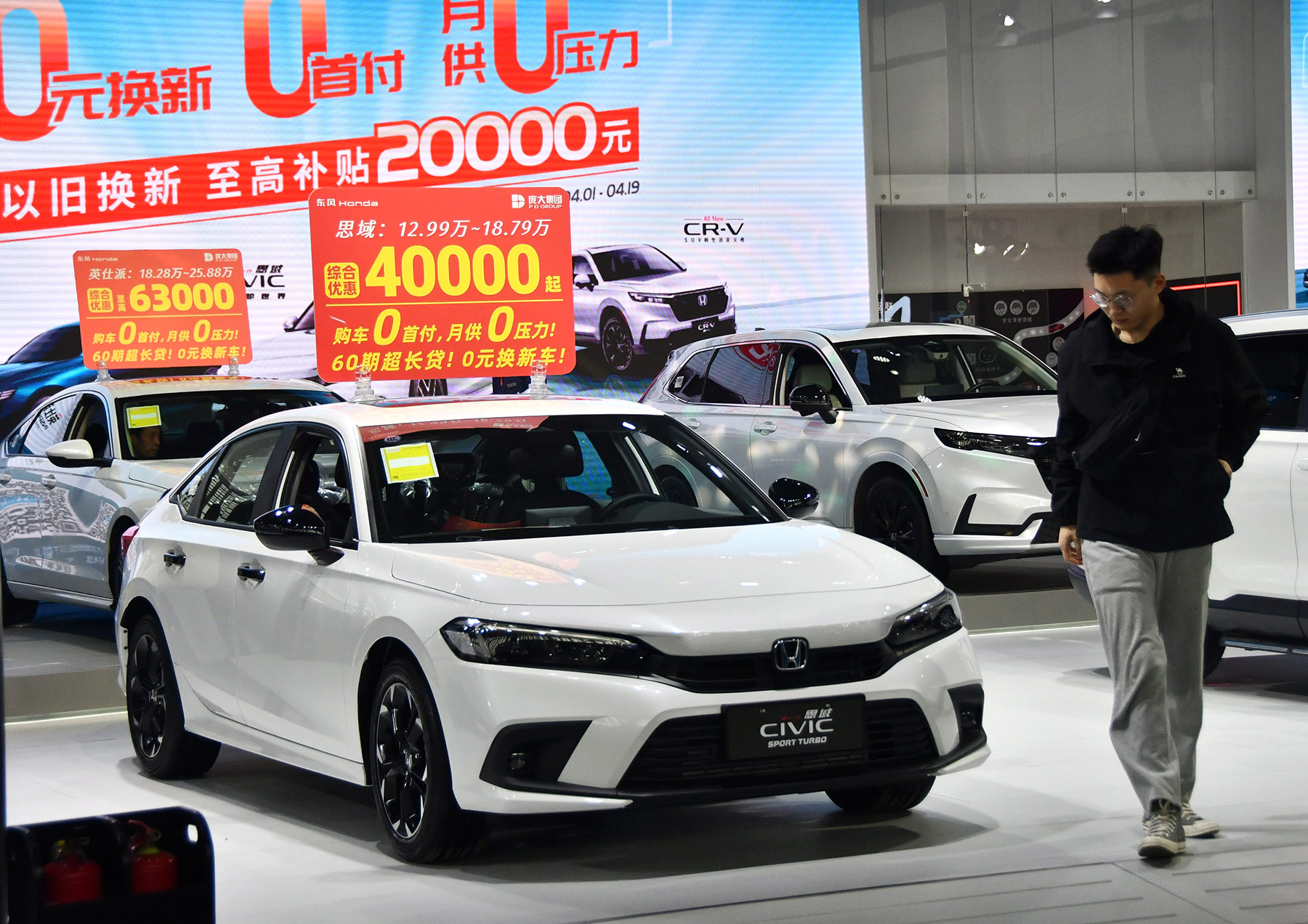Incentives for drivers to trade in vehicles fuel consumption and green transition

Automakers and local governments have introduced preferential policies and activities to help the trade-in of vehicles, which is expected to boost market demand by 1 trillion yuan ($138 billion), say industry experts.
China rolled out specific measures in April to assist trade-ins of polluting vehicles for new energy vehicles or fuel-efficient cars. It offers a subsidy of up 10,000 yuan for buyers who trade in older cars for new ones before the end of this year.
The initiative, part of an action plan to foster large-scale equipment renewal and the trade-in of consumer goods — nearly 15 years since the last such round of renewals — is designed to stimulate domestic consumption and advance the country's green transition.
READ MORE: Experts: Any hike in nation's tariffs on gasoline vehicles would be 'green'
The old-for-new promotional campaign has become a driving force in the automotive market, with a scale of 6-7 million units, said Zhao Chenxin, deputy director of the National Development and Reform Commission.
The demand for automotive replacements is expected to reach more than 1 trillion yuan, undoubtedly contributing to economic growth, Zhao added.
By the end of 2023, China had 280 million passenger cars. Around 110 million vehicles fell within the replacement peak period of four to nine years, contributing significantly to the automotive market's replacement volume.
Around 40 automakers — from mainstream joint ventures FAW-Volkswagen and FAW Toyota to local marques BYD and Great Wall Motors, and luxury brands BMW and Mercedes-Benz — have introduced trade-in subsidies, with cash incentives ranging from 5,000 to 55,000 yuan.
For instance, FAW Toyota has offered a 2 billion yuan replacement subsidy, while Mercedes-Benz has provided qualified buyers with up to 15,000 yuan in subsidies. Geely offered a time-limited maximum subsidy of up to 63,000 yuan for such trade-ins; Dongfeng Group initiated a trade-in program covering more than 50 models with an estimated subsidy exceeding 10 billion yuan.
The local governments of Jiangxi, Guangdong, Zhejiang and other provinces have also launched diverse old-for-new car trade-in programs and automotive consumption season activities.
Wuhan in Hubei province provides a maximum subsidy of 8,000 yuan. The multiple incentives have sparked enthusiasm among the public for upgrading their vehicles, leading to increased orders.
A sales manager of Xpeng in Hubei said that with the old-for-new policy, Xpeng's sales in Wuhan doubled compared with April. Xpeng offers an extra 10,000 to 15,000 yuan trade-in subsidy.
During the May Day holiday, Nio's store traffic increased by around 20 percent year-on-year. The carmaker introduced a maximum subsidy of 1 billion yuan for gasoline car trade-ins.
Customers in Hubei who purchase Nio vehicles will enjoy no down payment and up to 65,000 yuan in discounts.
According to the China Automotive Technology and Research Center, approximately 93 percent of NEV models qualify for the subsidy.
This round of the old-for-new policy is a timely boost to market confidence and consumer demand, said industry experts.
Xu Haidong, vice-chief engineer of the China Association of Automobile Manufacturers, said that from the current market trend, the second quarter is likely to present a favorable development.
The CAAM statistics show that April's vehicle sales reached 2.36 million units, a 9.3 percent increase year-on-year. Sales of NEVs rose 33.5 percent year-on-year to 850,000 units in April, accounting for 36 percent of total vehicle sales.
Xu said the trade-in policy has promoted environmental upgrades and stimulated consumption. By subsidizing the replacement of high-emission vehicles, it reduces pollution and supports green transformation, he said. Additionally, it incentivizes consumers to purchase cars, boosting the auto market amid current economic conditions.
ALSO READ: NEV makers move fast in China leveraging innovation, cooperation
The trade-in initiative also promotes the sales of used cars, with China's figures increasing by 14.68 percent year-on-year in April. The China Automobile Dealers Association reported that approximately 1.68 million used vehicles were traded in April, totaling 111.1 billion yuan in transactions.
This rapid sales expansion was attributed to growing consumer demand, business promotion activities and government policy support for consumer goods trade-ins. The association anticipates even higher transaction volumes in May, driven by the trade-in promotion policies, increased local promotions and auto shows.
Industry insiders said that the old-for-new policy not only increases the supply of used cars but drives the standardization of used car operations, raising industry management standards through regulated and efficient circulation.


